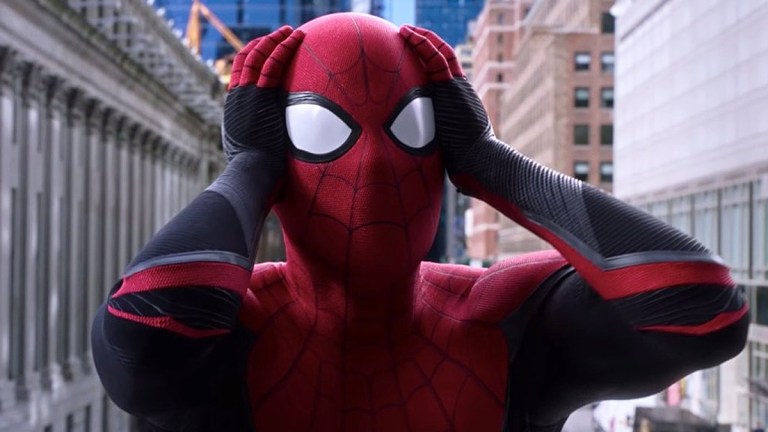Spider-Man: No Way Home Almost Brought Back a Surprising MCU Villain
Early drafts of Spider-Man: No Way Home kept Spidey in one universe, putting Mysterio in a key role.

This article contains Spider-Man: No Way Home spoilers
Look, Aunt May is always on the verge of death. It doesn’t matter what universe poor Peter Parker is in, his beloved old Aunt is always in danger and sometimes, she slips into oblivion. Or gets pushed into oblivion. Yes, she always come backs to life, sometimes when Peter makes a deal with the devil for some reason, but Aunt May’s precarious health has always been an important part of Peter’s story. Not even casting the vivacious actor Marisa Tomei could prevent that fundamental fact.
So when Spider-Man: No Way Home storyboard artist Phil Langone posted images to Instagram from the original script, it was no surprise to see Aunt May heading into the sweet hereafter. What was different, however, was the way May got dispatched.
Fans will recall that the theatrical version of No Way Home finds Willem Dafoe’s Green Goblin coming from the universe of Sam Raimi’s movies starring Tobey Maguire, and killing Aunt May before speeding away from Tom Holland’s Peter Parker. But Langone’s storyboards show Spidey facing off with Mysterio, Jake Gyllenhaal’s baddie from Spider-Man: Far From Home. The images show Spider-Man and Mysterio fighting near Peter’s school, with J. Jonah Jamison watching and providing commentary. When the battle results in May’s death, Peter goes into “berserker mode,” attacking Mysterio’s fishbowl with all of his strength.
According to Langone, the sequence would be a test of Peter’s moral compass, an opportunity to see if he can stick to the no-killing rule when pushed to the limit. While that does kinda happen at the end of No Way Home with Green Goblin, the question is initially more dialogue-driven and philosophical. The alternate universe Spiders, played by Maguire and Andrew Garfield, find Holland’s Peter brooding on a rooftop, contemplating revenge. The other Spiders share their own stories of grief, convincing Pete to stay the heroic course, and that plays a key part in Peter refraining from killing Goblin later.
As effective as many found the sequence in the finished film, there’s no question that the original draft would have packed a stronger punch. While we viewers have a relationship with Dafoe’s Goblin and know the chaos he caused for a different Peter, Holland’s Parker knows him only as a guy he tried to help who turned on him. It feels more like a random bad thing in Peter’s life (which, admittedly, is part of the ol’ Parker luck).
Conversely, Mysterio has a much stronger connection to the MCU Peter. Quentin Beck arrived in Peter’s life just when he needed to fill the gap left by Tony Stark’s death. He took Peter under his wing, showed him not only how to be a hero but also dangled in front of him the possibility of relieving the great responsibility of being Spider-Man. Then he betrayed Peter, shattering all expectations, and placed more burdens on Spidey by revealing his identity. In short, Mysterio had already done so much damage to Peter’s life that we understand why Peter would feel justified in killing him, even before May’s death.
Whatever value this version of the story would have had, it’s clear that Kevin Feige and Marvel wanted to go the Multiverse route and borrow beats from another franchise’s story. It remains to be seen if that decision will lead to better MCU Spider-Man stories in the future.
